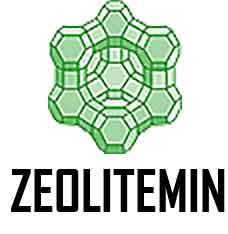
Japan has been collecting high-dose zeolite sandbags since 2011
Starting next year, TEPCO will begin collecting sandbags containing high doses of zeolite at two buildings at the Fukushima Daiichi nuclear power plant that store highly radiation-contaminated water. As you know, Natural Zeolite – Clinoptilolite is an economic material that adsorbs radioactive substances’ waste. Synthetic Zeolite‘s function is the same as natural zeolite, but the cost is more expensive.
Using zeolite Solution to Solve Radioactive Waste
The use of zeolite sandbags immediately after a nuclear accident is the correct solution for highly radiation-contaminated water. The main process plant is about 16 tons, and the high-temperature incineration plant is about 10 tons, totaling about 26 tons. TEPCO plans to begin recovery from its high-temperature incinerator building.
TEPCO presents a scheme for collecting highly radioactive water through zeolite at a meeting of the Nuclear Regulatory Authority on October 26, 2022.
The collection process consists of two processes:
- Accumulation of zeolite sandbags in one place, and absorption and encapsulation of high-risk radiation substances in radioactive wastewater
- Gradually place sandbags of these high-risk radioactive materials into containers
Due to the small amount of rubbish piled up, workers can enter the ground floor, starting from the high-temperature incineration building, and stacking high-radiation contaminated zeolite sandbags. They will be using dedicated robots for packaging transfer work soon.
TEPCO plans to store the collected sandbags in cylindrical containers with a capacity of about 1 ton and is considering shielding to reduce radiation exposure for workers and touch with radioactive wastewater.
On the other hand, at a meeting of the regulatory committee, TEPCO also announced plans to expand facilities to address storage facilities for radioactive sludge generated when purified sewage is near full capacity. They are already planning to add 192 sludge containers for the 4192 sludge container storage facility.
Reference
- How to use zeolite powder to remove ammonia nitrogen in wastewater
- How Natural Zeolite Detoxification Works in the Human Body
- Can zeolite detoxify? How is the powerful detoxification effect?
- Zeolite rocks with deodorant purification function with 100 times higher aldehyde removal capacity than activated carbon
- How to Remove Heavy Metals in the Industrial Environment
- Warning! More Economic Loss Caused by Heavy Metal Pollution
- Application of UZ-MIN Zeolite Animal Feeds
- Development of zeolites in the field of human body
- Zeolite dehydration can reduce 20% energy consumption of bioethanol refinery
- Discovery: New Function of Zeolite – Drug-Removing Properties
- Application of Zeolite in Water Treatment – Best Solution
- Uses and Benefits of Zeolite Minerals
- Zeolite Clinoptilolite was used as Strong Cement Additives
